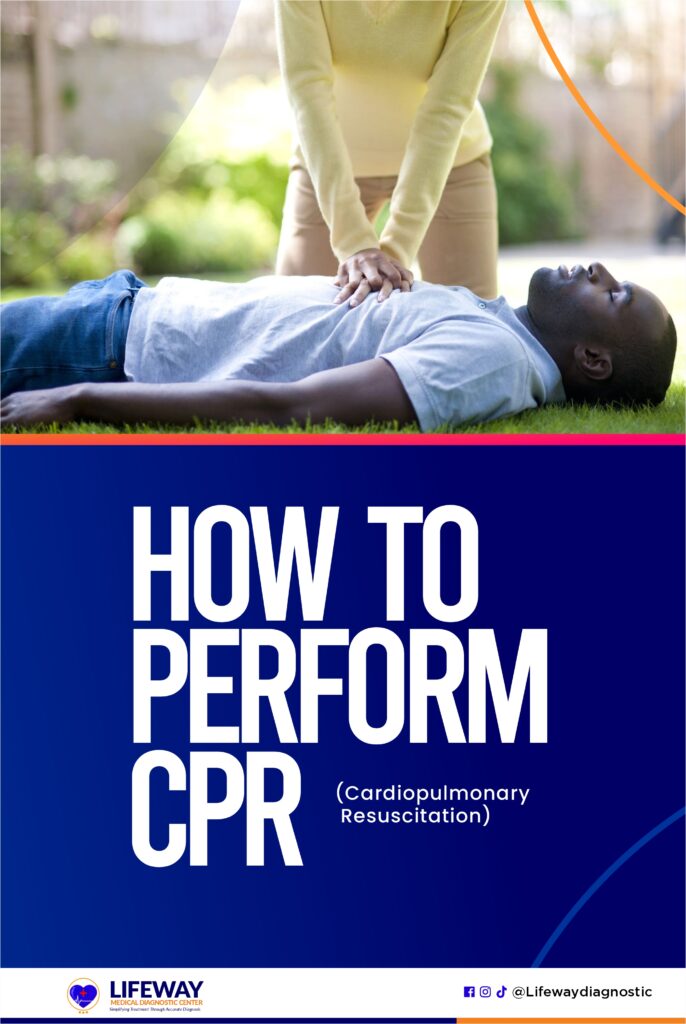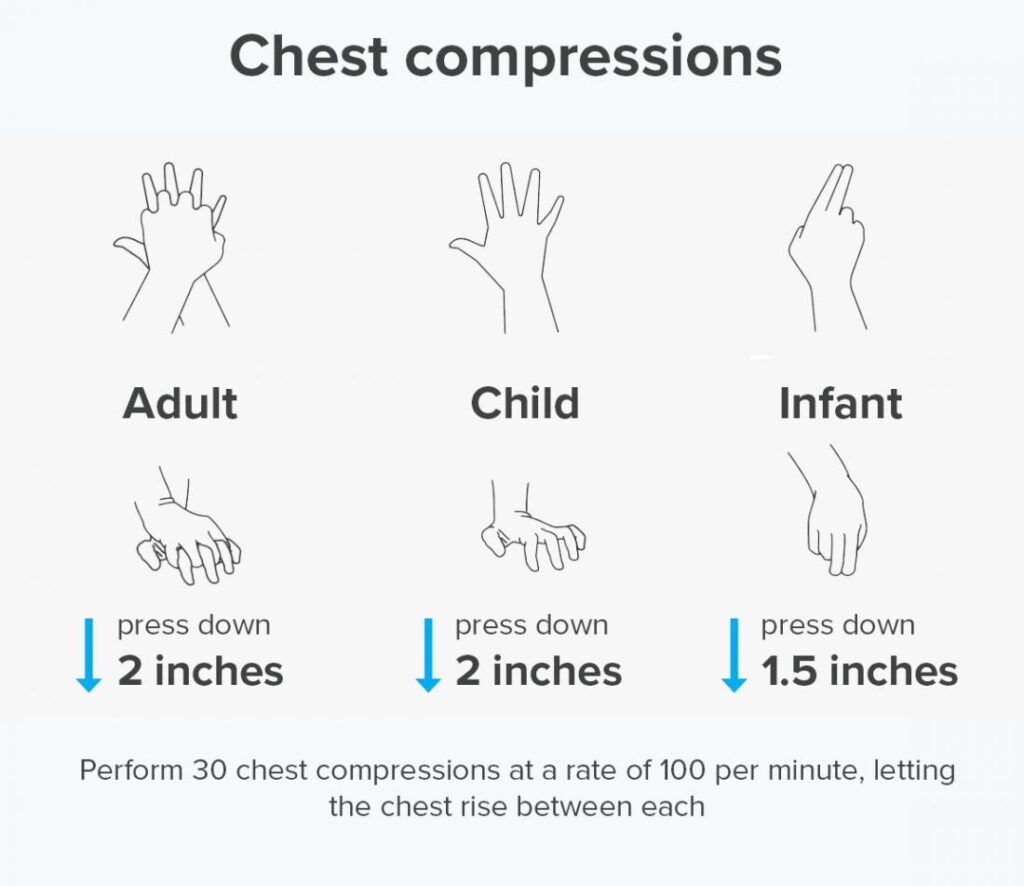Knowing how to perform CPR and when to do it, is important, as it can significantly increase the chances of survival.

CPR, or cardiopulmonary resuscitation, is a life-saving technique that helps to maintain blood flow when the heart stops beating.
Approximately 60% of individuals who drown or experience cardiac arrest outside of a hospital do not receive immediate assistance. This can be solved if people are willing to learn how to perform this life-saving skill.
We understand that emergencies can evoke fear and panic, leading to hesitation or an inability to respond effectively. However, knowing how to perform CPR effectively is a skill everyone should have.
This comprehensive guide will walk you through the step-by-step process of performing CPR effectively.
What is CPR?
CPR stands for cardiopulmonary resuscitation. It is an emergency life-saving technique performed on individuals rescued from drowning or experiencing cardiac arrest, or a sudden loss of heart function.
It is performed on individuals who collapse, lack a pulse or the ability to breathe independently, or worse still when the person is unable to respond.
CPR combines chest compressions and rescue breaths to manually circulate oxygenated blood to the vital organs until professional medical help arrives.
CPR is aimed at buying time and keeping the person alive until advanced medical care, such as defibrillation or other interventions, can be provided. This can significantly increase the chances of survival for someone experiencing cardiac arrest.
It is important to note that CPR techniques may vary slightly depending on the individual’s age (adult, child, or infant).
You can also read: What causes shortness of breath?
Why People Don’t Receive Immediate Assistance in CPR Situations
Several common reasons contribute to why people do not receive immediate assistance in situations such as drowning or cardiac arrest:
1. Lack of Awareness:
Many individuals may not recognize the severity of the situation or understand the need for immediate intervention.
They may underestimate the urgency or fail to recognize the signs of distress.
2. Fear or Panic:
Emergencies can evoke fear and panic, leading to hesitation or an inability to respond effectively.
People may feel overwhelmed or unsure of what actions to take, delaying their response.
3. Lack of Training:
A major reason people don’t receive immediate assistance in CPR situations is the lack of knowledge on how to perform CPR and first aid techniques.
Without proper training, individuals may be hesitant to intervene or may not feel confident in their ability to provide assistance.
4. Bystander Effect:
In situations where multiple people are present, the bystander effect can occur.
This phenomenon refers to the diffusion of responsibility, where individuals assume that someone else will take action, leading to inaction by everyone present.
5. Communication Barriers:
Language barriers or communication difficulties can hinder effective response.
In some instances, individuals may not be able to communicate their distress or call for help, further delaying the arrival of assistance.
6. Location and Accessibility:
The incident’s location and emergency services’ availability play a role. Response times may be delayed in remote areas or places with limited access to emergency medical services.
Addressing these reasons requires efforts to increase awareness, CPR training, and improve emergency service accessibility. Timely response saves lives.
Learning how to perform CPR is a valuable skill that can save lives in critical situations.
How to perform CPR
Step 1: Assess the Scene and Ensure Safety
Before initiating CPR, assess the scene for any potential hazards that could endanger you or the victim. Ensure that the area is safe, and if necessary, move the person to a secure location to avoid further harm.
Step 2: Check for Responsiveness
Approach the person and gently tap their shoulder while asking loudly, “Are you okay?” If there is no response, proceed to the next step.
Step 3: Call for Help
Immediately call emergency services or instruct someone nearby to do so. Time is of the essence in a cardiac arrest situation and every second counts.
Step 4: Open the Airway
Place the person carefully on their back and kneel beside their chest. Gently tilt the person’s head backward and lift the chin to open the airway. This helps ensure proper airflow during CPR.
Step 5: Check for any obstructions in the airway
To check for any obstructions in the person’s mouth, open it and visually inspect for objects like food or vomit. If you spot a loose obstruction, remove it carefully.
However, if the obstruction is not loose, avoid attempting to grasp it, as this may inadvertently push it deeper into the airway.
Step 6: Check for Breathing
Look, listen, and feel for any signs of breathing. Place your ear near the victim’s mouth while watching their chest for any rising or falling movement. If the person is not breathing or only gasping, it indicates a need for CPR.
Step 7: Start Chest Compressions
Position yourself near the person’s chest. Place one hand on the center of the chest, interlock the other hand on top, and push hard and fast.

Aim for 100-120 compressions per minute, allowing the chest to fully recoil between compressions.
Step 8: Provide Rescue Breaths
After 30 chest compressions, give two rescue breaths. Watch for the chest to rise with each breath.
Pinch the person’s nose shut, form a tight seal over their mouth with yours, and deliver two full breaths, each lasting about one second.
Step 9: Continue CPR cycles until help comes
Repeat the cycle of 30 chest compressions followed by two rescue breaths. Maintain a steady rhythm and continue until professional help arrives or the person shows signs of life.
Also Read: Types and Stages of Kidney Failure
Conclusion
Performing CPR involves positioning yourself near the person’s chest, placing one hand on the center of the chest, and interlocking the other hand on top.
Push hard and fast, aiming for a rate of 100-120 compressions per minute. Allow the chest to fully recoil between compressions. This ensures improved blood flow and more air when rescue breaths are administered.
Remember, proper CPR technique is essential, and it is recommended to receive training and certification in CPR for effective and safe administration.
Recommendations
- What are the symptoms of Kidney Disease?
- Health Benefits of Clapping Hands
- Health Benefits of Oatmeal
- Glaucoma: Types, Symptoms, Diagnosis, and Treatment
